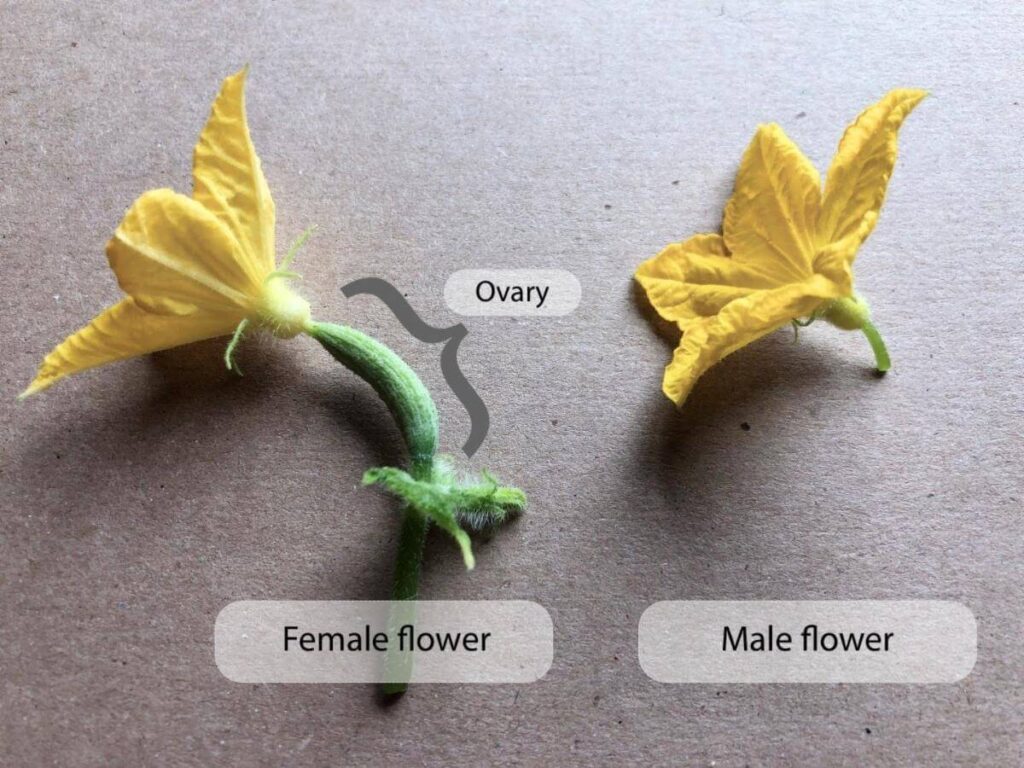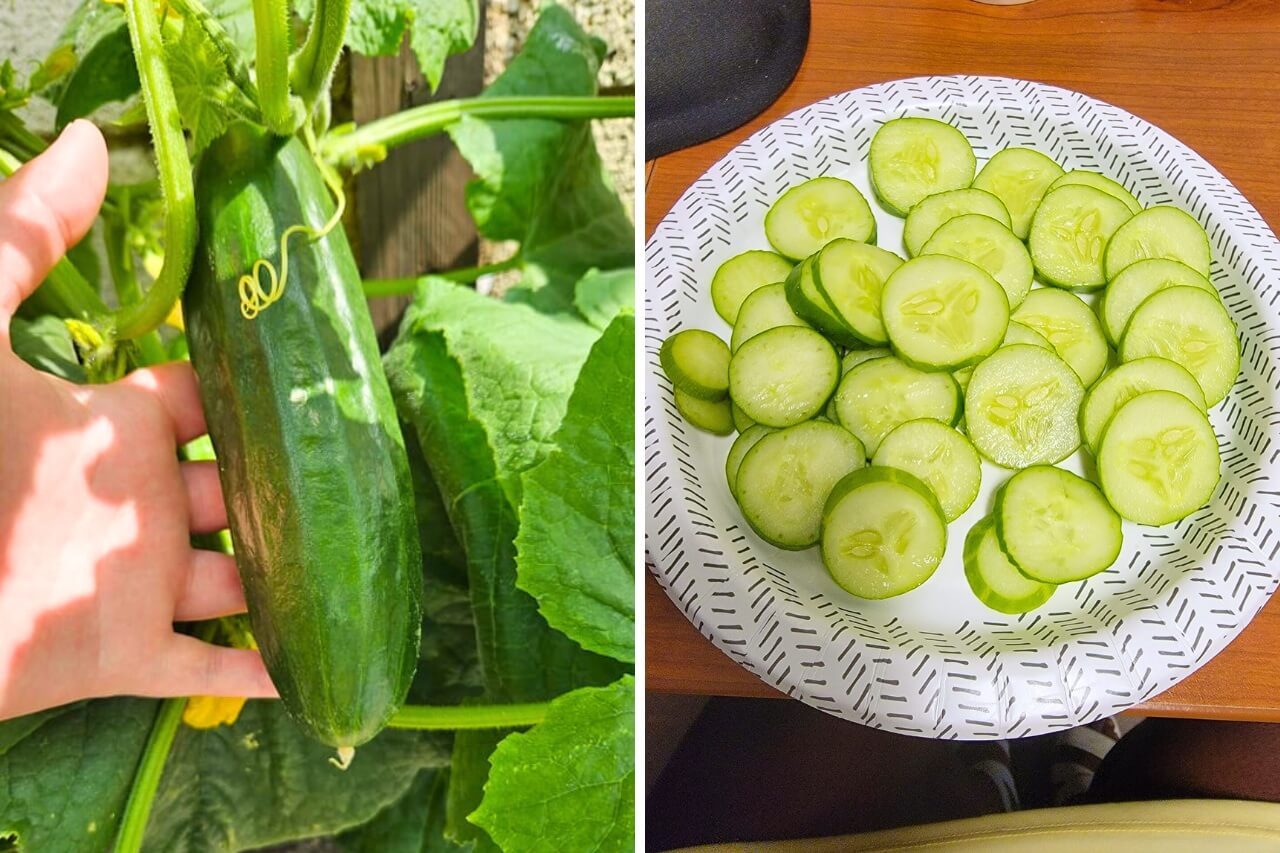As soon as summer and the heat start rolling in, I begin eating tons of cucumbers. I love them in salads, in sandwiches, or just raw as a snack with dips like hummus or simply olive oil and salt.
This explains why I like to grow them and why there are so many in my garden.
However, one thing I wanna say is that, believe it or not, growing cucumbers in a container can be better than planting them in the ground.
Think about it. It gives you more control over the growing conditions, from the shade level to the soil texture.
You just need to pay attention to a few things, but don’t worry, I’ll tell you all my secrets!
Bush varieties Are Usually Better
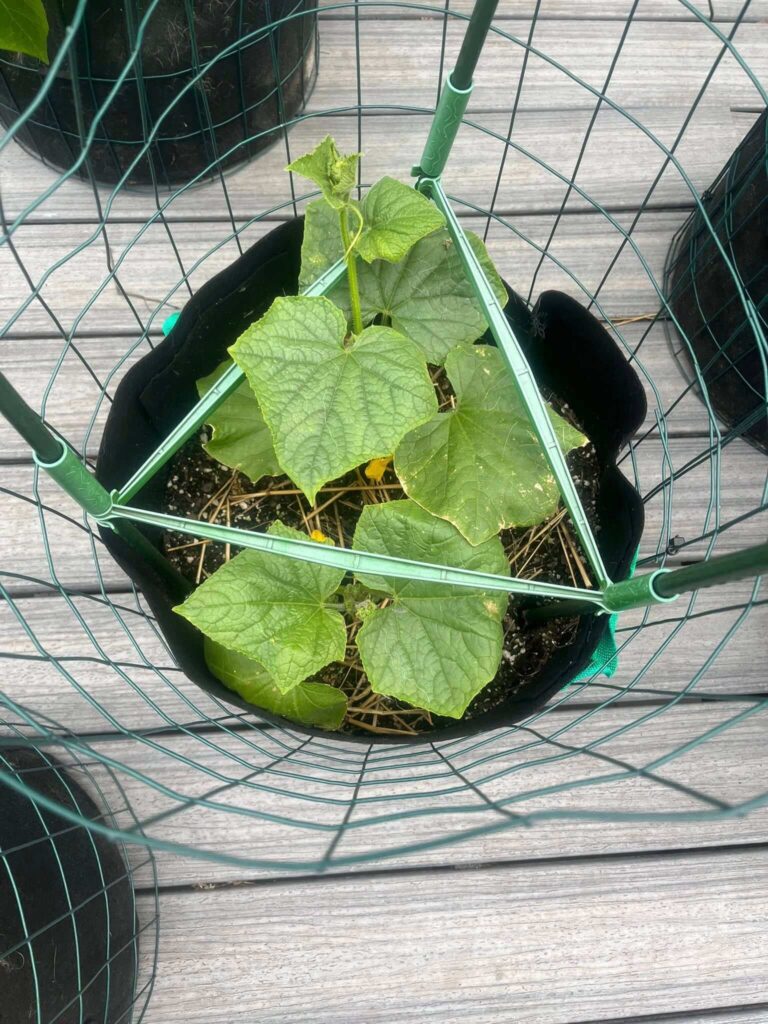
There are two main growth-habit types on the market: bushing and vining.
For most container-gardener folks out there, bush cucumber is the way to go. These varieties tend to be compact. Even when they grow and branch out, they’re still suitable for small spaces, unlike other vining varieties that sprawl over 6 feet.
I prefer the Bush Slicer and Bush Pickle seeds, but you can choose the one you prefer, just make sure it’s suitable for containers or pots.
Start When It’s Nice and Warm
If there’s one thing to know about cucumber plants, it’s that they don’t do well in cold temperatures. And like most plants, they’re even more sensitive when they’re young.
I live in southern Italy, so it’s warm enough as early as March, but you should consider the temperature in your area.
Ideally, you’ll want to germinate the seeds in soil that’s 70°F or 80°F. Anything lower than 60°F starts to be too risky.
Use Large Containers
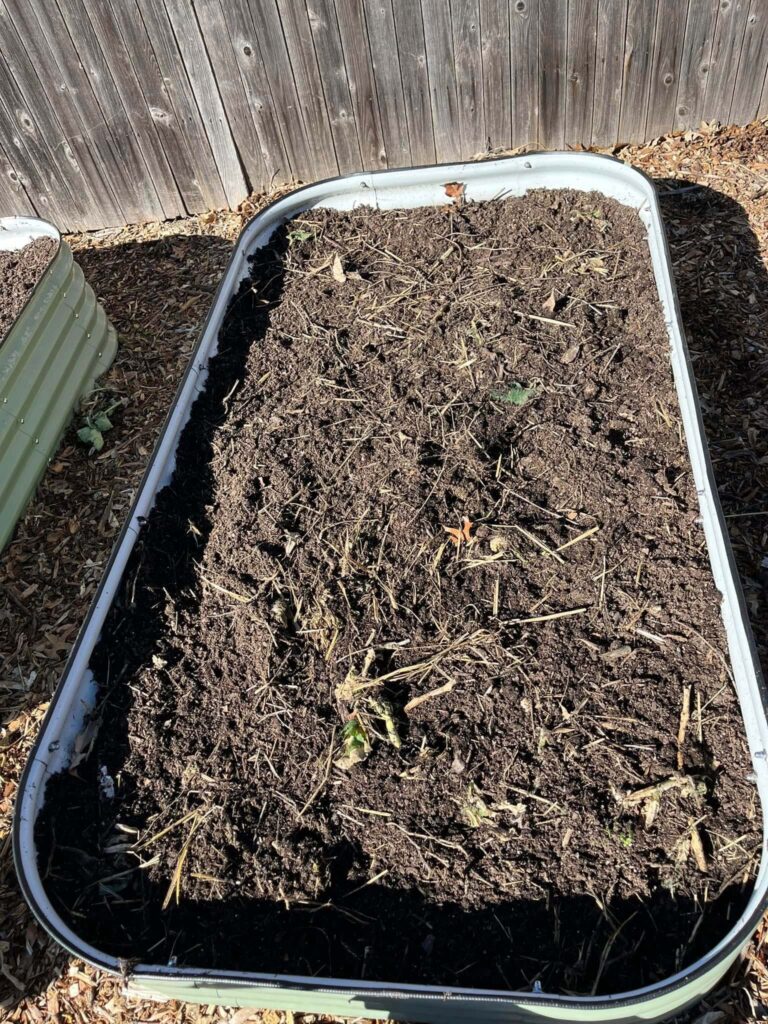
Cucumbers are fast growers, and they need an extensive root system to support this sort of growth. Keep that in mind when you’re picking a container for your plant.
I’d go with a well-drained pot with a diameter of 12 or 18 inches. If you don’t mind splurging, consider getting a self-watering one.
I’ll go over the water demand in a minute, but for now, you need to know that consistent watering is the key to sweet, juicy cucumbers. And self-watering planters can make this much easier, especially for busy folks.
Don’t Underestimate the Importance of a Trellis
A trellis is essential. Yes, even if you pick a bush-type cucumber.
Using a trellis makes the harvest way more manageable, and I assure you that it will reduce the risk of pest damage simply by keeping your foliage off the ground.
Since you’re going compact here, there’s no need for a full-size trellis. A smaller one plunged into the potting mix will do.
That being said (like most of the young plants), you might need to weave the bush cucumber into the trellis with your hand initially.
A Little Bit of Fertilizer Goes a Long Way
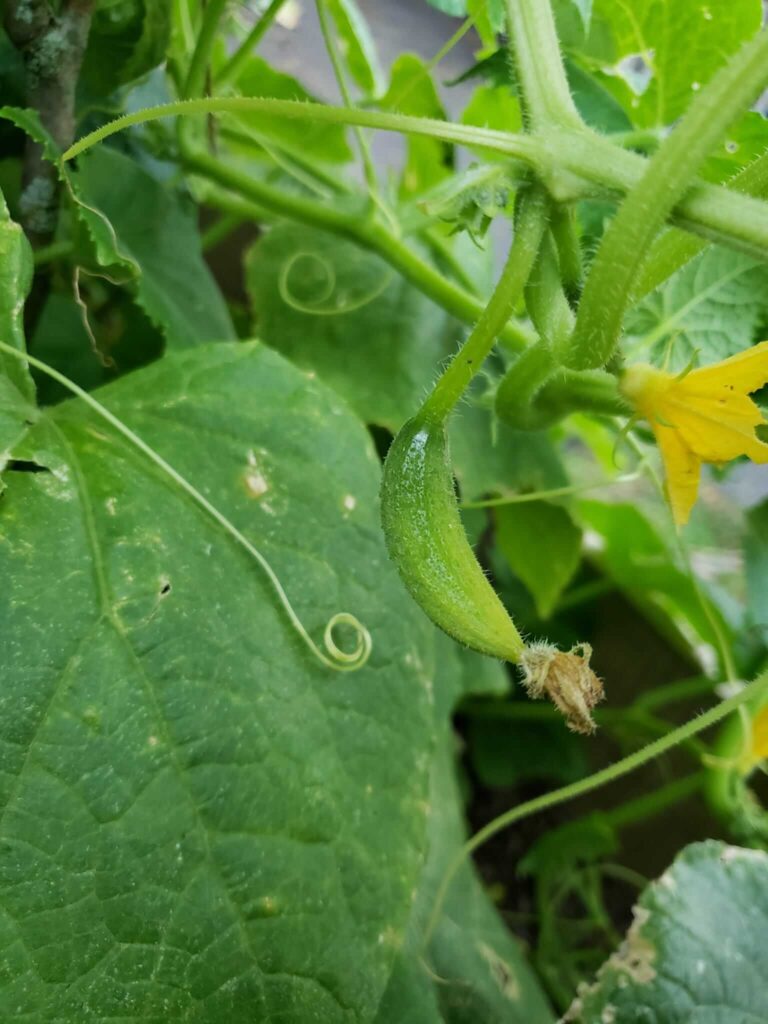
During the potting phase, you should use a rich, well-drained potting soil with a tiny amount of compost. This should provide an organic nutrient boost to keep the plant going for a while.
However, your cucumber still needs fertilization as it fruits and flowers. Phosphorus and potassium-rich fertilizers are usually a good choice, or you can buy a mix designed specifically for cucumbers.
Remember that if the plant is not too big, a little bit of fertilizer goes a long way. If you use too much rather than having beneficial effects, it will have negative effects.
It is a mistake that many beginners make. If you are just starting out, I suggest you take a look at the most common beginner mistakes you should always avoid.
Check the Soil Moisture
As I mentioned earlier, consistent watering is the secret to getting tasty and juicy cucumbers.
Make it a habit to check the level of moisture of the soil. I do not like overly electronic tools, I use my finger as my grandmother taught me.
Inserting your finger into the ground up to the second knuckle. If the soil feels dry at that depth, it’s time to water. Avoid wetting the leaves when watering to prevent fungal diseases
Add water gradually until the soil feels slightly moist below the surface but mostly dry on the top. And never wet the leaves, if you’re not an expert, have a look at the 7 common watering mistakes every gardener should avoid.
Pollination is Essential
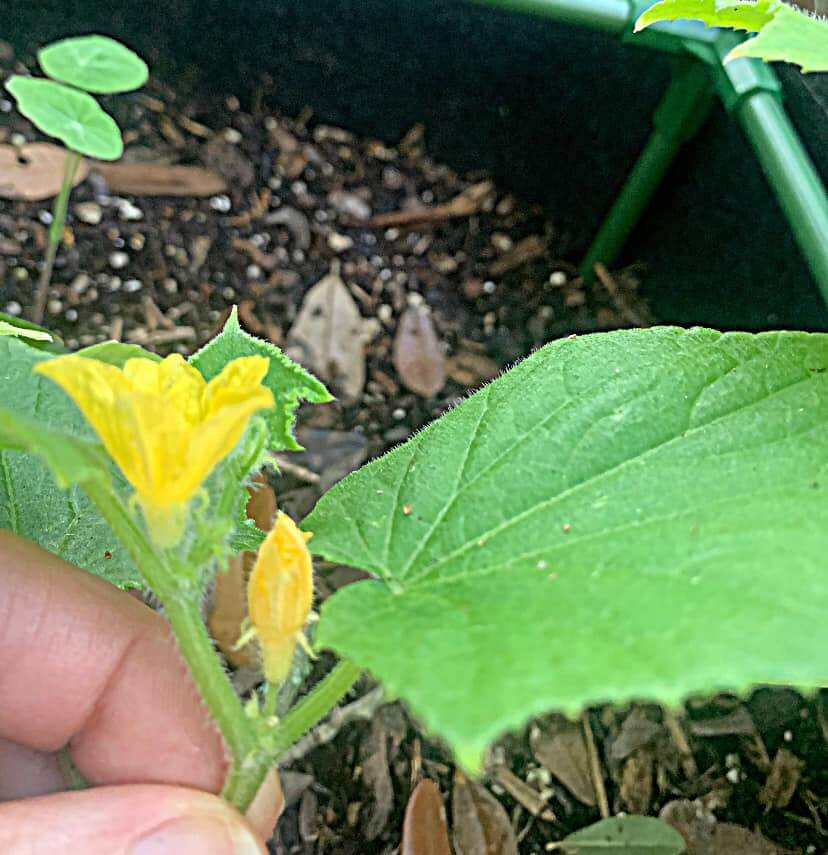
If your plant doesn’t get pollinated, you might end up with deformed cucumbers, or you might not even get any.
Now, those who are growing cucumbers in a rich garden don’t have to worry too much about that. The other plants will attract pollinators to the area, and those bees and butterflies will take it from there.
If your cucumber container is indoors (I don’t recommend that as it needs strong lighting), you’ll have to do it manually.
Use a cotton swab to pick up some yellow pollen from the male flower and lightly dab that pollen onto the center of a female flower
To avoid confusion, the male flowers have just a thin stem behind the petals, while the female ones have a tiny baby cucumber at the base.
It’s easier to understand with a photo than with words. I’ll leave it below.
